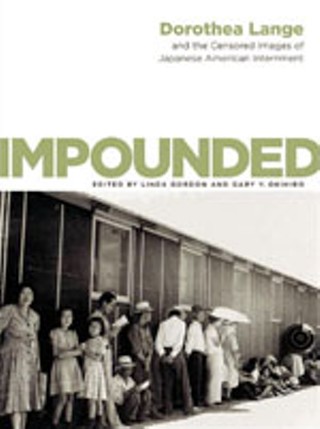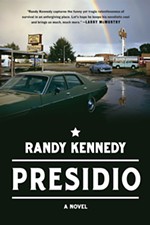Book Review: Readings
It's hard to state exactly what makes the photos so captivating. Editor Linda Gordon suggests that Lange's work is "saturated with conviction."
Reviewed by Belinda Acosta, Fri., Jan. 12, 2007

Impounded: Dorothea Lange and the Censored Images of Japanese American Internment
edited by Linda Gordon and Gary Y. Okihiro
Norton, 288 pp., $29.95
When historian Linda Gordon began research on her biography of Dorothea Lange, she stumbled upon an unknown stash of photographs by the famous photographer. She soon realized these photos were worthy of their own book, even if it represented a gloomy moment in U.S. history: the internment of Japanese-Americans following the bombing of Pearl Harbor.Already known for her Depression-era photos of migrant workers, the War Relocation Authority hired Lange to document the 1942 internment process. But her reputation as a world-class photographer did not provide her free rein. Images of barbed wire, filth, or the desperately ill were discouraged. Still, her photos were apparently disturbing enough that the U.S. Army "impounded" them – the word literally stamped across most of the images, Gordon writes. Fortunately, the negatives were untouched and unceremoniously stored at the National Archives. One hundred of Lange's 760 internment photos appear in Impounded.
It's hard to state exactly what makes the photos so captivating. Gordon suggests that Lange's work is "saturated with conviction." Another thought is those images of internees turning horse stalls into something familiar and homey is as profoundly human as it is heartbreaking. This, along with Lange's captions, written, Gordon says, under the stress of grueling deadlines and working conditions, artfully record an astonishing time that bears an uncomfortable resemblance to the present.
Lange's photos make up the bulk of the book. Gordon includes an intimate biography of the photographer, and Gary Y. Okihiro, director of the Center for the Study of Ethnicity and Race at Columbia University, provides a history of the Japanese-American experience, energized with personal narratives. Both essays are thankful contributions, accessible to the general reader, written with insight and compassion. If there is a message in the book, it's, as Okihiro writes, "that future generations will never forget."










